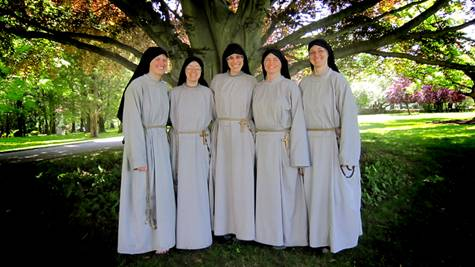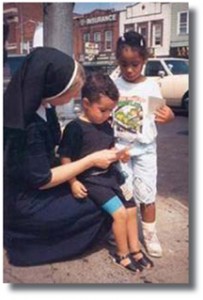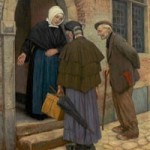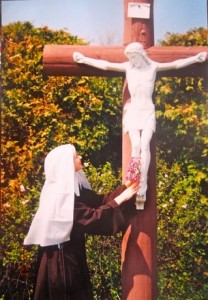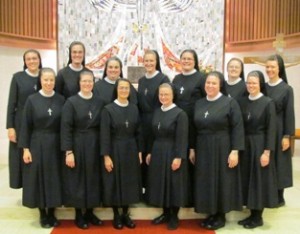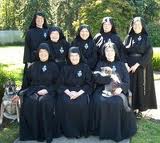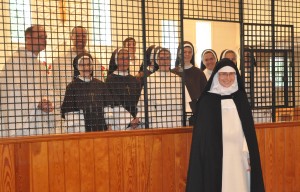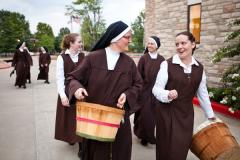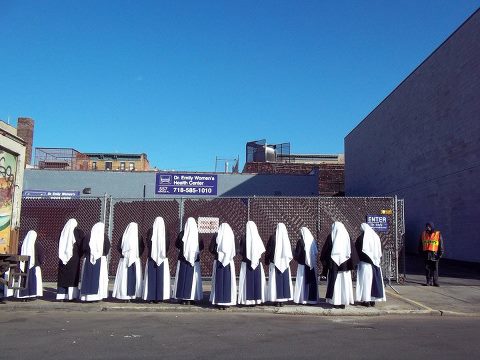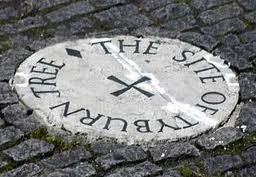 A thriving community of cloistered Benedictine women religious in London, England, is situated near the site where 100 Catholic men and women were executed during the Protestant Reformation. Located just yards from the site of the infamous Tyburn Tree or King’s Gallows, their crypt honors the more than 350 Catholics who died for their Faith. As their website says, the martyr’s blood turned a tree of death into a Tree of Life.
A thriving community of cloistered Benedictine women religious in London, England, is situated near the site where 100 Catholic men and women were executed during the Protestant Reformation. Located just yards from the site of the infamous Tyburn Tree or King’s Gallows, their crypt honors the more than 350 Catholics who died for their Faith. As their website says, the martyr’s blood turned a tree of death into a Tree of Life.
The first Tyburn martyr was a Carthusian who refused to accept the supremacy of King Henry VIII over the Church of England. The last martyr was St. Oliver Plunkett, Archbishop and Primate of Ireland, who was drawn to the gallows on a hurdle (sled) in his pontifical robes. Margaret Ward was hung by her hands and flogged for smuggling a rope to a priest in prison and ultimately hanged. Relics to be seen include straw and linens stained with the blood of 5 Jesuit martyrs and a bone from the finger of St. John Roberts, OSB, who was hanged, drawn and quartered for being a Catholic priest.
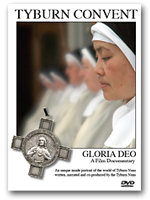 The community at Tyburn, The Adorers of the Sacred Heart of Jesus of Montmartre, was founded by Marie-Adele Garnier, OSB, in 1898 who desired to offer to the Sacred Heart of Jesus a continual homage of love and reparation. Forced to flee France because of religious persecution, they came to London in 1901 and were encouraged by a Cardinal to set up a “shrine at the English field of martyrs.” In 1585, a priest told the court who had sentenced St. Edmund Campion to death, “One day there, where you have put him to death, a religious house will arise, thanks to an important offering.”
The community at Tyburn, The Adorers of the Sacred Heart of Jesus of Montmartre, was founded by Marie-Adele Garnier, OSB, in 1898 who desired to offer to the Sacred Heart of Jesus a continual homage of love and reparation. Forced to flee France because of religious persecution, they came to London in 1901 and were encouraged by a Cardinal to set up a “shrine at the English field of martyrs.” In 1585, a priest told the court who had sentenced St. Edmund Campion to death, “One day there, where you have put him to death, a religious house will arise, thanks to an important offering.”
After the convent was established, Catholics came forward with the relics that they had kept hidden away for generations. But God’s light is not kept under a bushel basket. From the London convent, that light has resulted in new foundations in New Zealand, Ireland, Scotland, Ecuador, Peru, Colombia and Australia. In 2005, at the invitation of Pope John Paul II, they established a house in Rome.
A DVD on their life can be purchased on their website. Their apostolate is to pray for the Holy Father, the Church, their country and the world. As the article in Contact magazine (which is published by the Confraternity of Christ the Priest) says, “The Tyburn nuns are called to serve God and Holy Church by the hidden ministry of prayer. A deep prayer union with God is the beginning of Heaven; death merely opens the door.”
